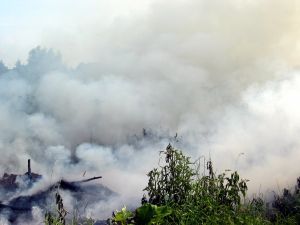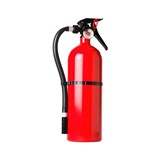A UTAS study has examined the widely-held view that ‘grazing stops blazing’ and found that is not always true.
In fact, in some vegetation, grazing may actually increase the likelihood of fire.
Professor James Kirkpatrick from the UTAS School of Geography and Environmental Studies said the truth of the ‘grazing stops blazing’ argument is dependent on vegetation type and environment.
"Many graziers argue that the countryside is not being looked after if it is not grazed, because livestock remove the fuel that would support wildfires," Prof. Kirkpatrick said.
"The argument is based on the idea of ‘competition’ between herbivores and fire for the same ‘food’, that is plant biomass. However animals require a range of nutrients, such as proteins, in their diets and are much fussier eaters than fire, which only requires carbohydrates."
"There are two important questions – if vegetation is grazed does this lower the chances of a fire? And does grazing after burning lower the chances of another fire?"
Experiments were conducted at several sites in Tasmania, including lawn grassland, tussock (bunch) grassland, healthy forest and sedgeland. Sites were fenced and monitored to determine how much and what components of the vegetation were consumed by grazers – mostly wallabies and wombats, but also sheep at some sites. At many of the sites, fire potential and fuel load were measured before and for two years after fire.
"Grazing, either by itself, or after fire, had little effect on flammability where shrubs and sedges covered the ground. Grazing is irrelevant to fire hazard in these vegetation types" Prof. Kirkpatrick said.
"In a surprising finding, the grazing of tussock grasslands increased their flammability, because the grazing animals removed live shoots, leaving a high concentration of dead shoots, which increased the chances that these sites would burn."
In contrast, lawn grasslands were maintained in a continuously regenerating state by grazing. This vegetation is nutritious and palatable and almost all of it becomes food for grazers – there is rarely enough to sustain a fire, because in this vegetation type, the grazing animals eat all the fuel.
Grazing after fire turned some tussock grasslands into lawn grasslands, but this was not always the case.
"Grazing may reduce, increase or have no effect on fire hazard. The ‘grazing stops blazing’ argument is one that requires testing for each vegetation type and environment both before and after fire. However, it would seem to be precautionary not to graze tussock grasslands in areas in which it was important to reduce fire hazard" Prof. Kirkpatrick said.
‘Variation in the effects of vertebrate grazing on fire potential between grassland structural types’, by Dr Steve Leonard, Prof. Jamie Kirkpatrick and Dr Jon Marsden-Smedley was published in the Journal of Applied Ecology in 2010. A second paper, ‘Influence of grazing and vegetation type on post-fire flammability’ was recently accepted for publication by the same journal.
This research was funded by the Australian Research Council.














